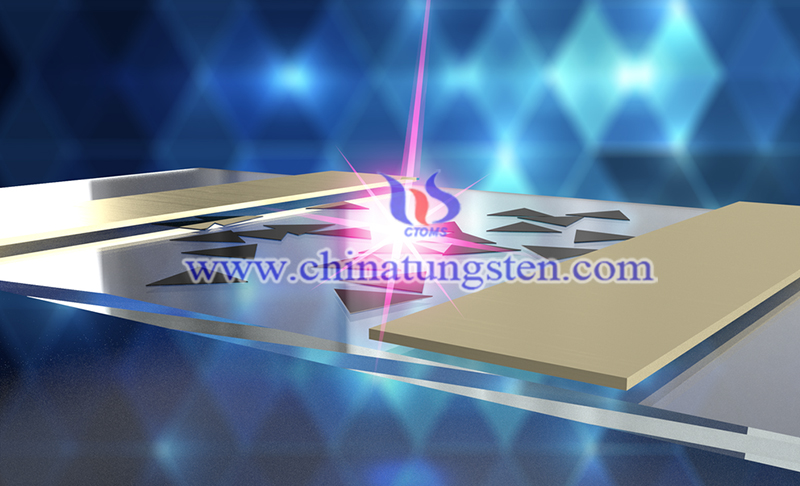Scientists Develop MoS2 Photodetectors on Glass
- Details
- Category: Tungsten's News
- Published on Thursday, 12 November 2020 20:05
Penn State researchers in ACS Nano published a new paper, seeking to further advance molybdenum disulfide (MoS2) photodetectors’ use by integrating the technology with durable Gorilla Glass, the material used for smart phone screens that are manufactured by Corning Incorporated.
Photodetectors contribute greatly to the convenience of modern life. Also known as photosensors, it converts light energy into electrical signals to complete tasks such as opening automatic sliding doors and automatically adjusting a cell phone’s screen brightness in different lighting conditions.

The integration of photodetectors with Gorilla glass could lead to the commercial development of “smart glass,” or glass equipped with automatic sensing properties. Smart glass has a number of applications ranging from imaging to advanced robotics, according to the researchers. The combination of photoelectric sensors and Gorilla glass may prompt the commercial development of "smart glass" or glasses with automatic sensing properties.
“There are two problems to address when attempting to manufacture and scale photodetectors on glass,” said principal investigator Saptarshi Das, assistant professor of engineering science and mechanics (ESM). “It must be done using relatively low temperatures, as the glass degrades at high temperatures, and must ensure the photodetector can operate on glass using minimal energy.”
In order to overcome the first challenge, Das, along with ESM doctoral student Joseph R. Nasr, determined that the chemical compound molybdenum disulfide was the best material to use as a coating on the glass. Then, Joshua Robinson, professor of materials science and engineering (MatSE), and MatSE doctoral student Nicholas Simonson used a chemical reactor at 600 degrees Celsius - a low enough temperature so as not to degrade the Gorilla glass - to fuse the compound and glass.
The next step was to turn the MoS2 photodetector glass and coating into a photodetector by patterning it using a conventional electron beam lithography tool. "Then we tested the glass with green LED lighting. Unlike the laser lighting commonly used in similar optoelectronics research, it simulates a more natural light source." Nasr said.
The ultra-thin body of the molybdenum disulfide photoelectric sensor can better control static electricity and ensure that it can work with low power consumption, which is a key requirement for future smart glass technology.
Researchers say that if the smart glass is commercially developed, it may bring technological advances in a wide range of industrial fields, including in manufacturing, civil infrastructure, energy, health care, transportation, and aerospace engineering, according to the researchers. The technology could be applied in biomedical imaging, security surveillance, environmental sensing, optical communication, night vision, motion detection, and collision avoidance systems for autonomous vehicles and robots.
“The smart MoS2 photodetectors glass on car windshields could adapt to oncoming high-beam headlights when driving at night by automatically shifting its opacity using the technology,” Robinson said. “And new Boeing 757 planes could utilize the glass on their windows for pilots and passengers to automatically dim sunlight.”
| Molybdenum Supplier: Chinatungsten Online www.molybdenum.com.cn | Tel.: 86 592 5129696; Fax: 86 592 5129797;Email:sales@chinatungsten.com |
| Tungsten News & Prices, 3G Version: http://3g.chinatungsten.com | Molybdenum News & Molybdenum Price: http://news.molybdenum.com.cn |



 sales@chinatungsten.com
sales@chinatungsten.com